- Soft disposable contact lenses
- Spherical
- Astigmatism
- Presbyopia
- Color
- Specialty contact lenses
- Rigid gas permeable
- Orthokeratology
- Scleral
- Hybrid
- Custom soft contact lenses
Soft Disposable Contact Lenses
Soft disposable contact lenses are by far the largest portion of the contact lens market. They offer the best comfort and convenience with the varying disposable options. Older conventional contact lenses were replaced every 3 months. Modern disposable contact lenses are replaced monthly, bi-weekly or daily. A daily contact lens is the ideal option because every time they are put on it is a clean and fresh lens. However, daily contact lenses are more expensive and should be discussed with patients.
Some contact lenses are worn as "continuous wear" where they are not taken out (slept in) for a specified amount of time. This method of wear is not recommended because it increases the risk of an infection. "Daily wear" is recommended where the contact lenses are taken out every night because it decreases risk of infections and potential other complications.
Most soft contact lenses today are made of varying types of silicone hydrogel materials. Silicone hydrogel materials transmit oxygen to the cornea better and allow it to breathe. When they are combined with the advanced coatings used today they resist buildup and are the best option compared to older hydrogels.
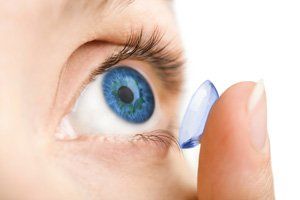
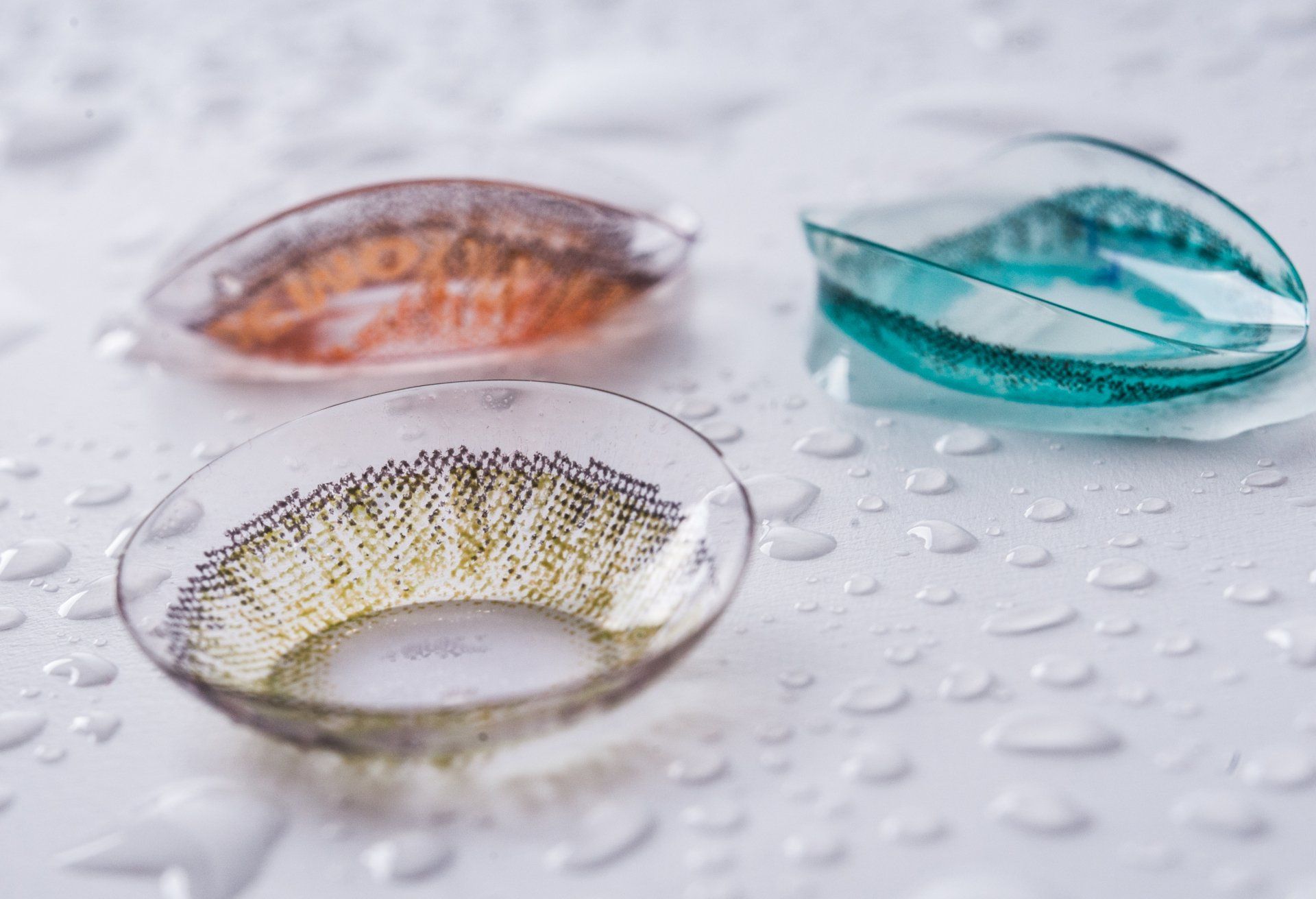
There are four major soft contact lens manufacturers in the United States. They include Alcon, Bausch & Lomb, Cooper Vision and Johnson & Johnson. Their commercially available contact lenses are listed below:
- Total 30 & Air Optix with Hydraglyde in spherical, astigmatism and multifocal (1-month)
- Dailies Total 1, Precision 1 & Dailies Aquacomfort Plus (1-day)
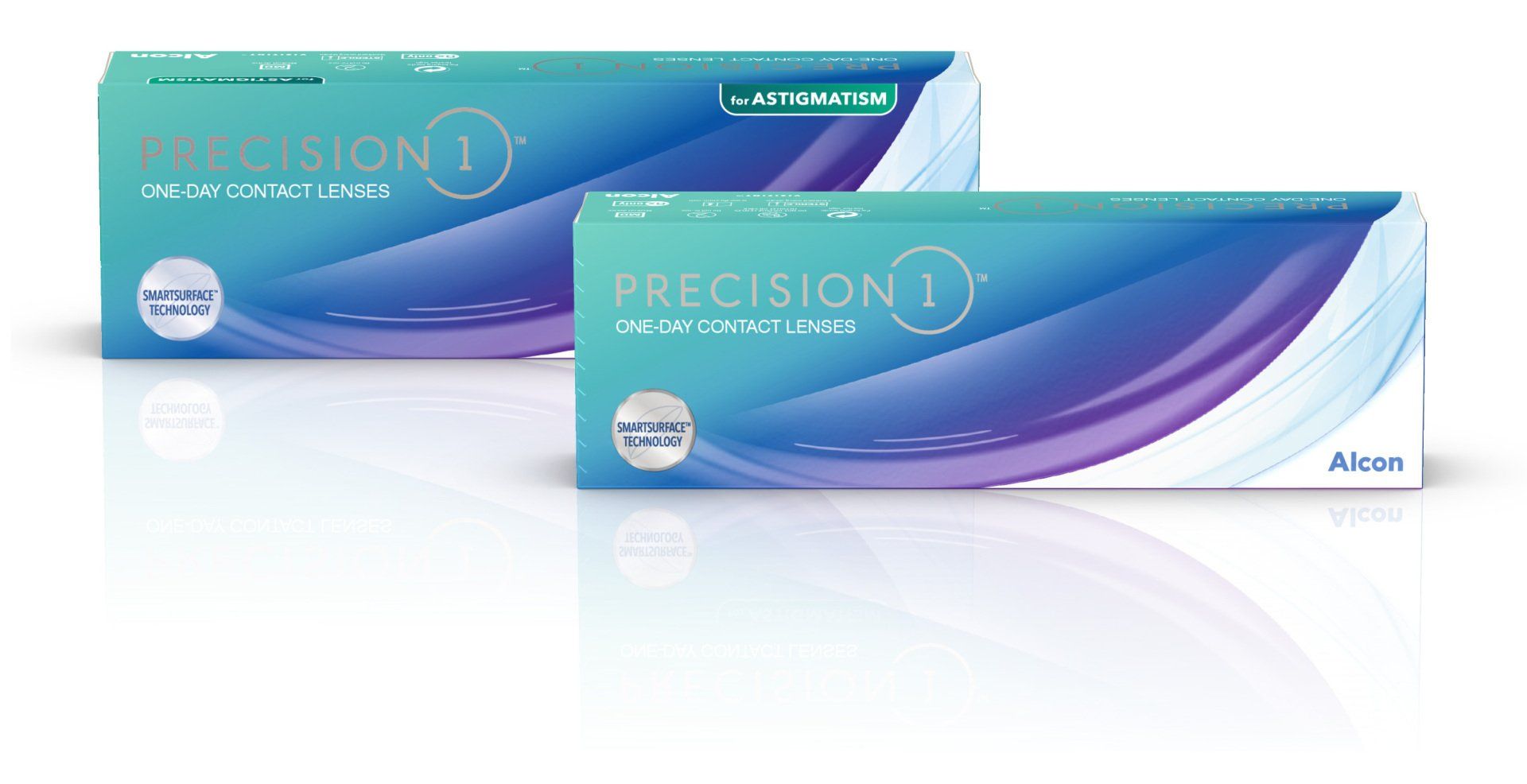
- Biofiinty Energys in spherical, astigmatism, multifocal and extended ranges (1- month)
- Avaira Vitality in spherical and astigmatism (bi-weekly)
- Clariti 1-Day and My Day (1-day)
- MiSight (1-day, myopia control)
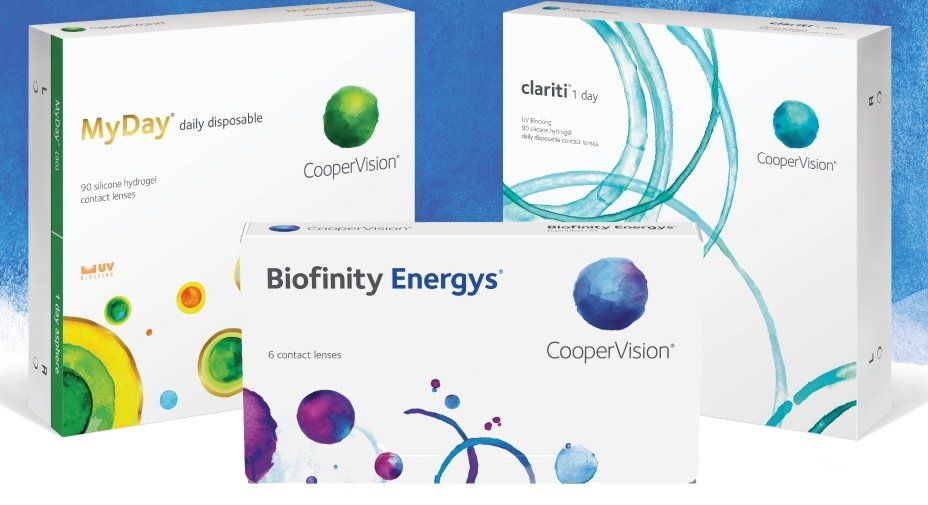
- Ultra in spherical, astigmatism and multifocal (1-month)
- Infuse & Biotrue Dailies (1-day)
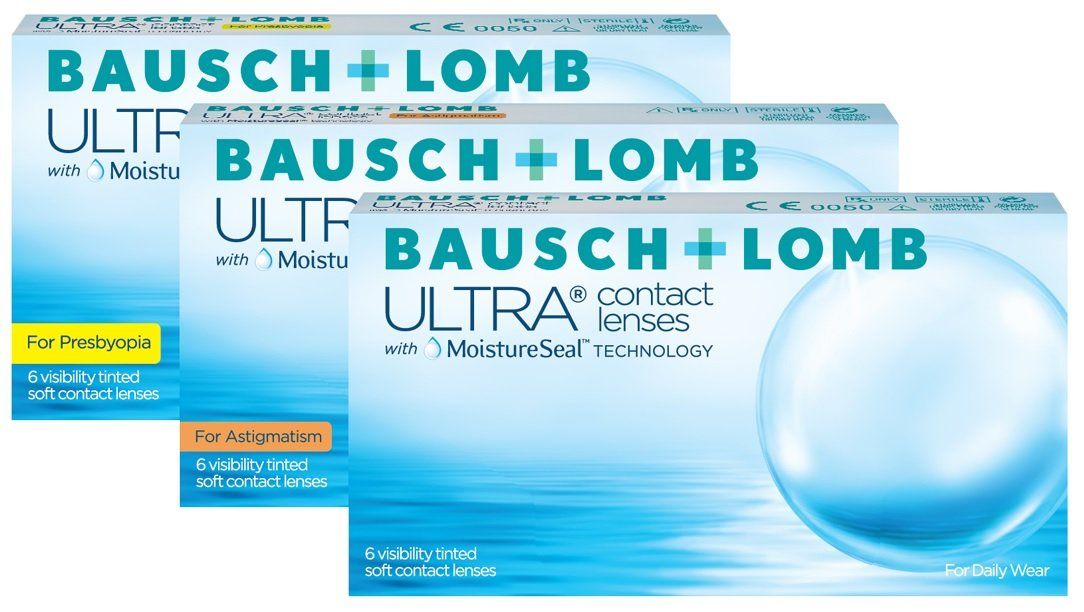
- Acuvue Vita in spherical and astigmatism (1-month)
- Acuvue Oasys in spherical, astigmatism, multifocal and Transitions (bi-weekly)
- Acuvue Oasys Max 1-day, Acuvue Oasys 1-Day and Acuvue 1-Day Moist (1-Day)
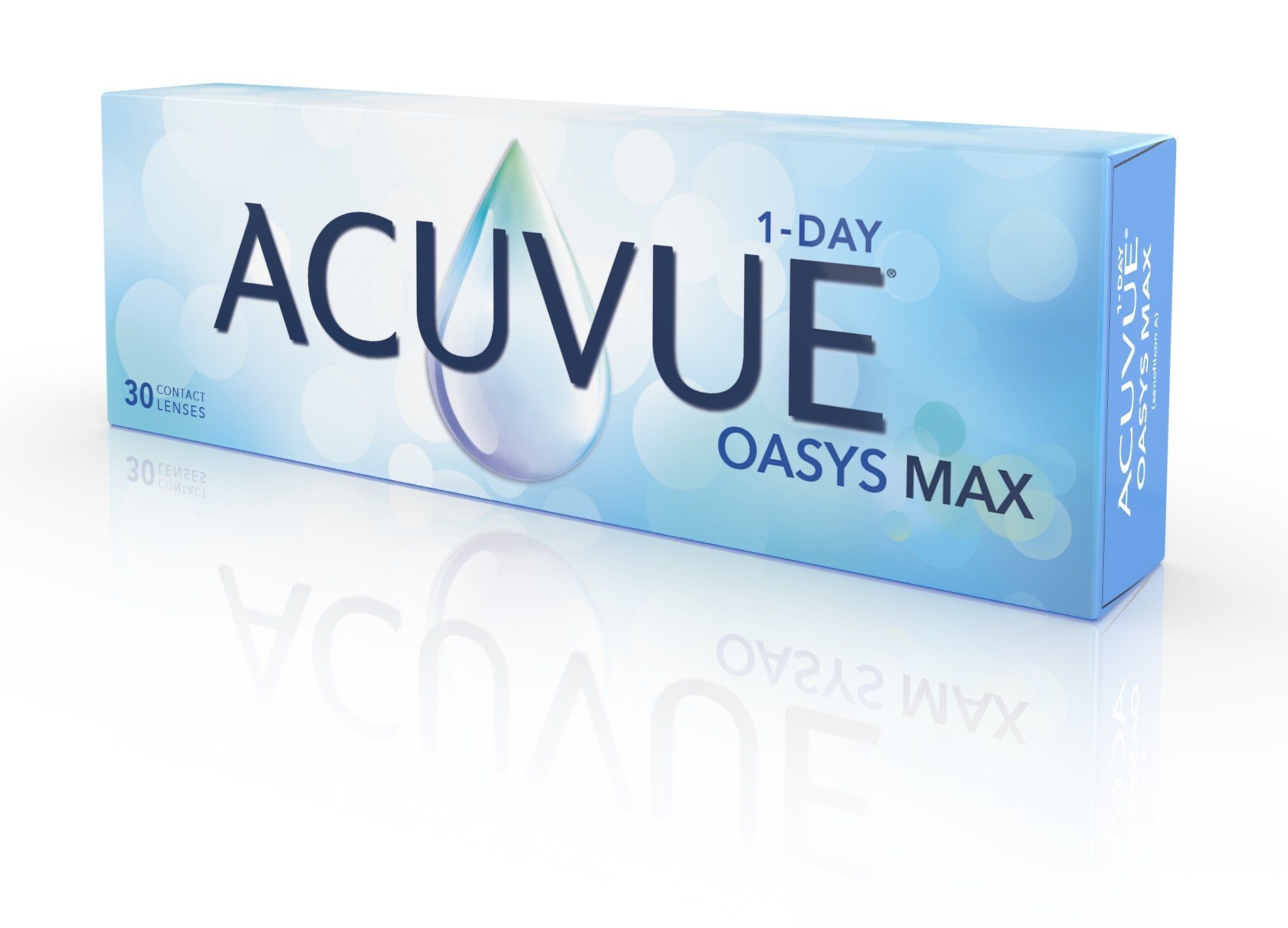
Astigmatism Soft Contact Lenses
Astigmatism contact lenses require proper orientation for them to work correctly. They are often weighted or have thinned edges to help them orient in the proper direction. When an astigmatism lens is first put on, it can take a few minutes for the contacts to get into place. Vision is typically a little blurry during this time. If after the few minutes it has not moved into the correct position, your eye doctor will need to select a different contact lens to account for the rotation.
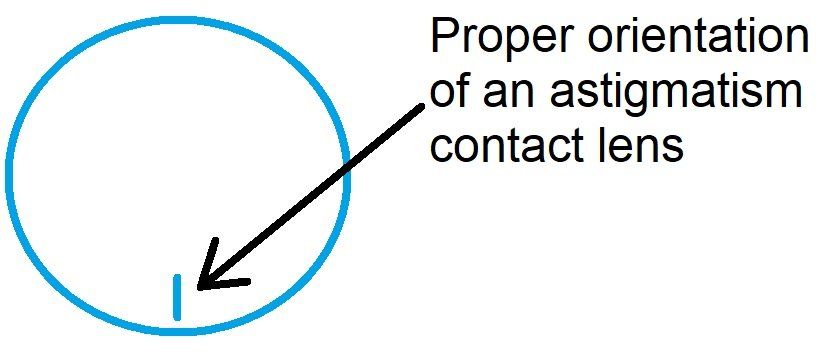
Multifocal Soft Contact Lenses
Most soft multifocal contacts utilize concentric circles in the lens to transition from one distance to another. These types of contacts have a center distance or center near design. The center distance design has the center portion of the lens optimized for distance and the center near design has the center portion of the lens optimized for near.
Oftentimes the center distance is utilized in the dominant eye and the center near is used in the near eye. These lenses provide "good" vision at distance and near, but they usually are not as crisp as an accurate eyeglass prescription. New contact lens designs are optimizing the size of these concentric circles based on pupil size.
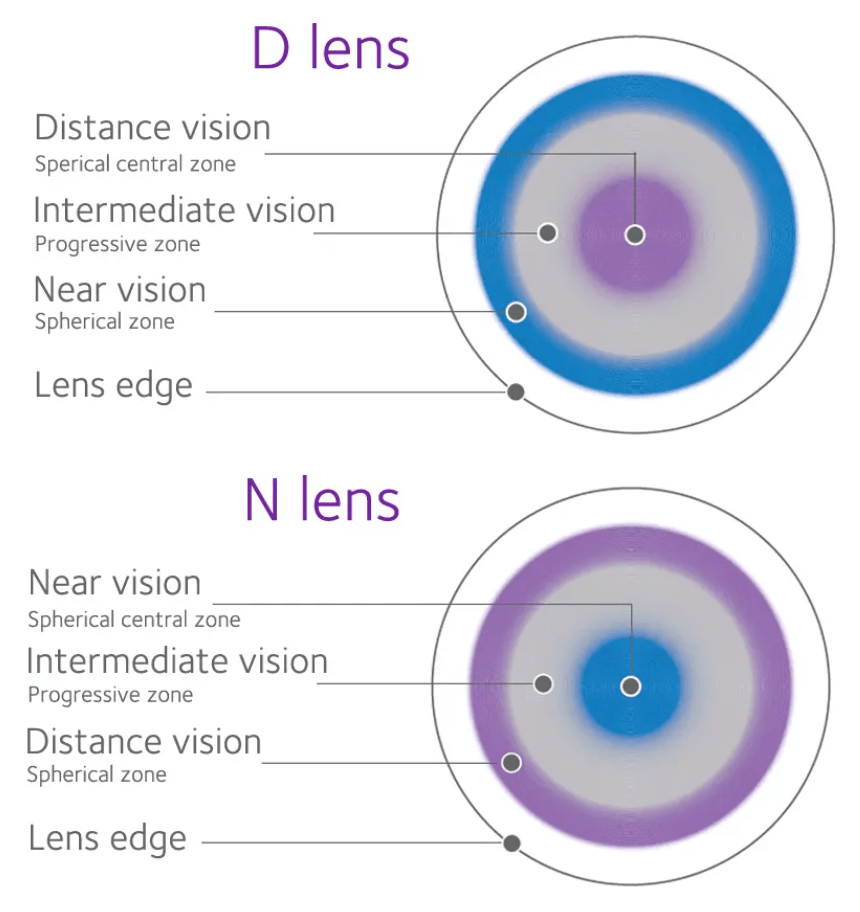
Colored Soft Contact Lenses
Colored soft contact lenses are used by those that want to aesthetically enhance their own eye color or by actors looking to change their eye color for theatrics. Air Optix Colors and Dailies Colors are the two brands of widely available colored contact lenses. Both of these brands are manufactured by Alcon. Air Optix Colors has 12 different options and Dailies Colors has four.
Colored contact lenses that correct for astigmatism are very hard to come by. Colored contact lens trials that doctors receive are only plano powers. Patients need to decide on the color type that they prefer with those diagnostic lenses and then order it with the correct power based on their prescription.
When looking to buy colored or theatrical contacts, consumers should be very careful who they buy them from. There is a long history of non-FDA approved contact lenses being sold without a proper prescription leading to serious complications.
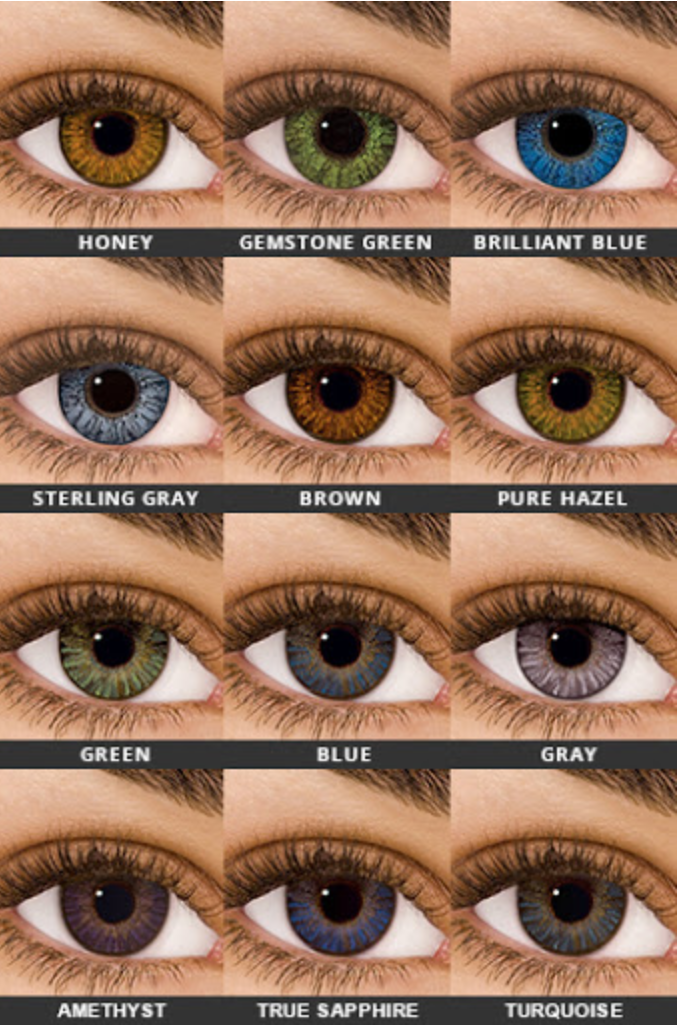
Replacement Schedule
Replacing your lenses more often is healthier and more comfortable for your eyes. Organic (i.e. protein and lipids) and inorganic materials (i.e. calcium) found naturally in your tears can collect on your lenses. The collection of material on your lenses leads to irritation, redness, shortened wearing times and makes your eyes more susceptible to infection. Cleaning and disinfecting your contact lenses extends their life and wearability, but is still no substitute for regular replacement. Some material is unable to be removed and the contact lenses just wear out over time. Each brand of contact lenses comes with an FDA recommended replacement schedule, which includes one day, two weeks, one month, three months and yearly.
Contact Lens Solutions
The ideal contact lens solution would disinfect and clean a contact lens without causing irritation or allergic reactions. A peroxide based solution like
Clear Care
or
Oxysept
comes closest to this. With peroxide solutions, hydrogen peroxide is used to clean and disinfect the lenses, but it requires a neutralizing agent and six hours to neutralize. After six hours the lens has been disinfected, cleaned and the solution is preservative-free. If any type of irritation exists with contact lenses, a peroxide solution is the way to go! It can be a problem-solver. However, waiting six hours can be very inconvenient and not very practical. For example, if a contact lens is dropped and needs to be cleaned, waiting six hours until you can wear it is not very useful. Because of this there are multi-purpose solutions that clean, disinfect and rehydrate contact lenses. However, they contain preservatives and antimicrobial chemicals that can cause irritation and discomfort in some patients. This is especially true of some of the generic brands. Some of the better name brands include
Biotrue,
Revitalens
Optifree.
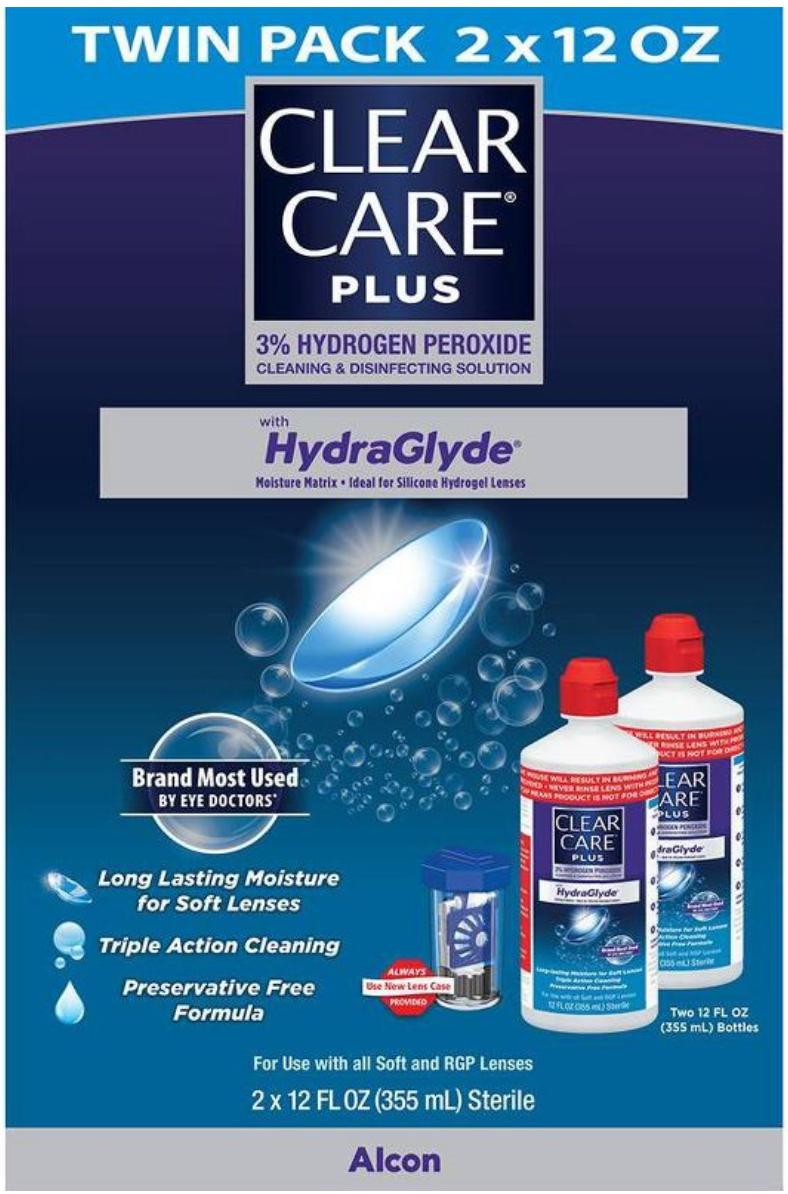
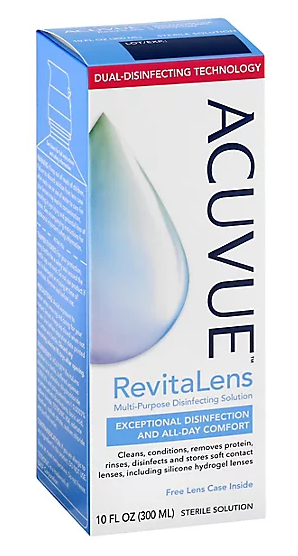
Water Activities
Water activities and contact lens wear are not a good mix. This includes hot tubs, showering, swimming and tap water use with contact lenses. Wearing prescription goggles for water activities is a safer alternative. There are numerous infectious "bugs" in water that can lead to severe infections and complications. An ameba called Acanthamoeba that is common in lakes, tap and well water causes an infection called Acanthamoeba keratitis. This infection is extremely painful, very difficult to treat and has a risk of causing blindness. If contact lenses are worn during water activities, daily lenses that can be immediately disposed of after getting out of the water are the best option.

- Wash hands with soap free of lotions and perfumes, dry hands with a lint-free towel
- Open contact lens foil or remove contact lens from case
- Rinse contact lens prior to insertion; make sure it is clean and slightly wet.
- Place contact lens on the index finger of your dominant hand, the lens should have a slight curl to it
- Put your other hand over your head and with your middle finger pull your upper eyelid up.
- With your dominant hand’s middle finger pull the lower eyelid down and then with the contact lens on your index finger place it on the colored portion of the eye.
- Next slowly blink to smooth out the contact lens on the eye, some patients will move their eye around prior to blinking to help it center.
Removal
- Look up with your eye
- Pull your lower lid down with your non-dominant hand
- With your dominant hand’s index finger pull the contact lens onto the white portion of the eye
- Then with the tips of your thumb and index finger of your dominant hand gently pinch the lens and pull it off
- Place the lens in the palm of your hand, apply a little contact lens solution and gently rub it to help remove any protein build up
- Place the contact lens in its case with fresh contact lens solution and let the lens soak
- Having long fingernails can make inserting and especially removing contact lenses more difficult. You are more likely to scratch your eye or tear the lens.
- Contact lenses should be applied to the eye prior to any application of make-up, lotion or perfume to avoid contamination of the lens.
- 3. If the prescription between the two eyes is different, it is important to keep track of what contact lens is being used in each eye. Contact lens cases usually have a marking to allow you to know which part of the case a particular lens should be stored in. Always store your soft contact lenses in a clean case with contact lens solution.
- Rubbing to clean your contact lens after removal is important to do even if your contact lens solution states “no rub.” The mild abrasion that occurs when rubbing your lens gently removes deposits that solutions don’t remove.
- If your eyes dry out during the day when wearing your contacts, remove them for about one-half hour and let them soak in a saline solution. This will “re-hydrate” the contact lens and allow for a more comfortable and longer wearing time.
- Using a contact lens longer than the recommended replacement time increases your risk of eye infections and irritation. Wearing your contact lenses too long causes the contact lens material to break down, material and organisms accumulate, which may lead to a breakdown of the corneal epithelium barrier and create a vector for infection.
- Contact lens cases should be replaced every three months or when visibly contaminated.
- After removing your contacts from their case for insertion, dispose of the old solution and let the case air dry during the day.
- Sometimes the lenses being put on a patient are lopsided and fall of your finger easily. In this case it is easier to insert the lens with the head down looking into a mirror flat on the table.